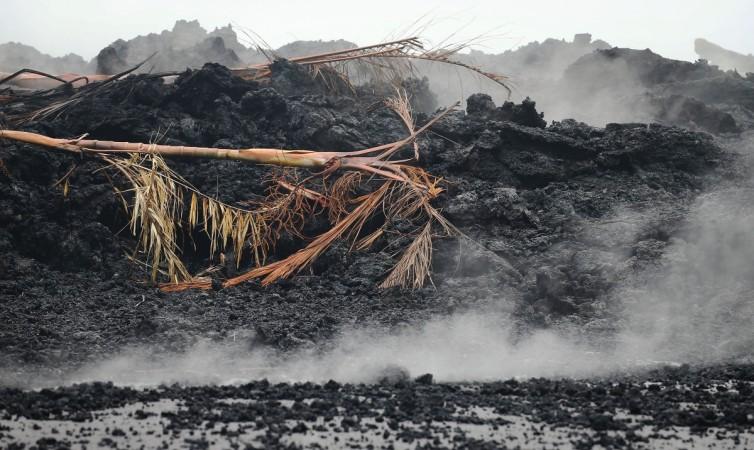
After scientists warned residents of the Big Island of possible steam-driven explosions, hazardous volcanic smog and acid rain following the eruption of the Kilauea volcano, they have now said hurled up rocks from summit crater weighing 10-tons can be flung as far as a half a mile away.
"It could be large rocks, it could be boulders the size of cows... But the larger rocks are going to fall closer to the vent. So if you are, I believe, a half-mile radius of the eruption site — that's where it could be deadly," says Jessica Ferracane of the Hawaii Volcanoes National Park, which will shut down indefinitely on Friday.
As many as 14 fissures have opened up in the region and are spewing volcanic ashes. Moreover, The US Geological Survey's Hawaiian Volcano Observatory Wednesday has warned of possible eruptions in the coming week.
"At this time, we cannot say with certainty that explosive activity will occur, how large the explosions could be, or how long such explosive activity could continue," an advisory said, according to CNN.
However, lava is continuing to sink in a lake inside a Kilauea crater and this can trigger steam explosions due to the influx of groundwater.
"If an explosion happens, there's a risk at all scales. If you're near the crater within a half a mile or so, then you would be subject to a bombardment by ballistic blocks weighing as much as 10 or 12 tons," said Don Swanson, of the Hawaiian Volcano Observatory, according to hawaiinewsnow.com.
"If you're within several miles of the summit of the volcano, of the lava lake, then you would be subject to falls of marble sized rocks, ash, finer grain material. and if you're beyond that say you're 10 miles, 15, 20 downwind, you could experience fine ash floating from the sky like snow,' he added.
After a spokesperson for the county of Hawaii's Mayor, last week, said the surrounding area is so toxic [because of sulfur dioxide gas] that even first responders are finding it difficult to move without protective equipment. It won't be surprising if volcanic pollutants can settle easily with moisture to create volcanic smog, or "vog".
These sulfuric acid droplets can also fall with rain, creating acid rain, which can be as corrosive as diluted battery acid.
"Wherever you have a vog plume, you're going to have acid rain, if it's raining," University of Hawaii meteorologist Steven Businger told CNN affiliate Hawaii News Now.
Acid rain can also contaminate water supplies by dissolving metal from building and plumbing materials in the water.

















